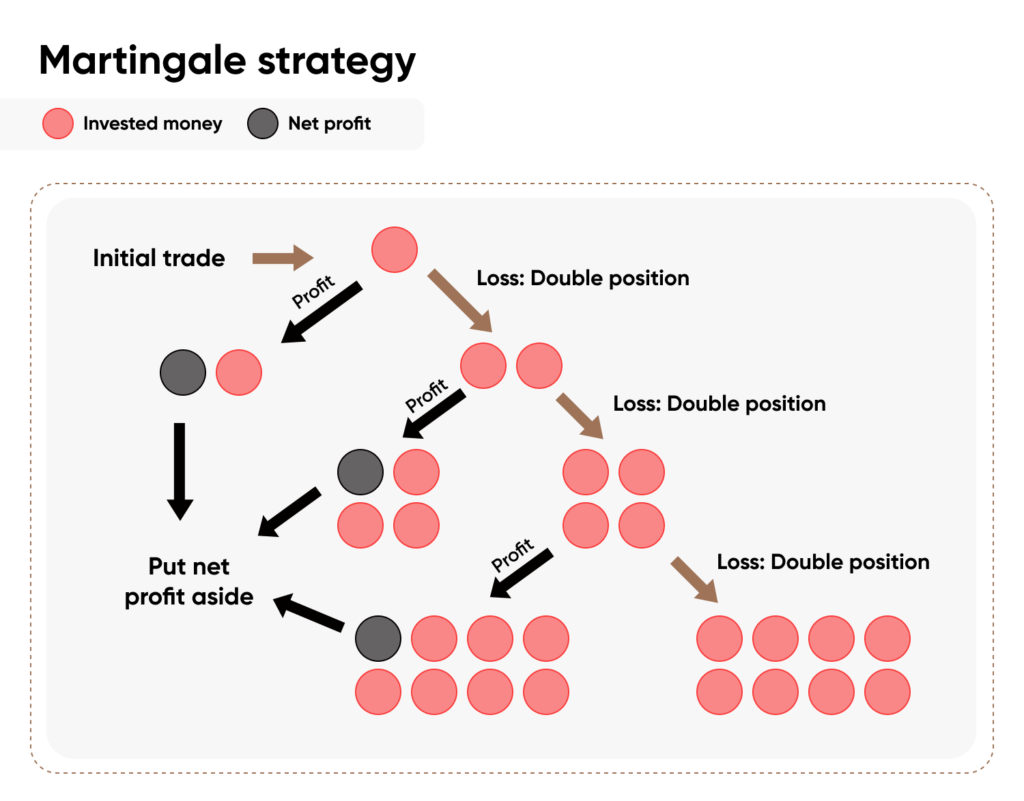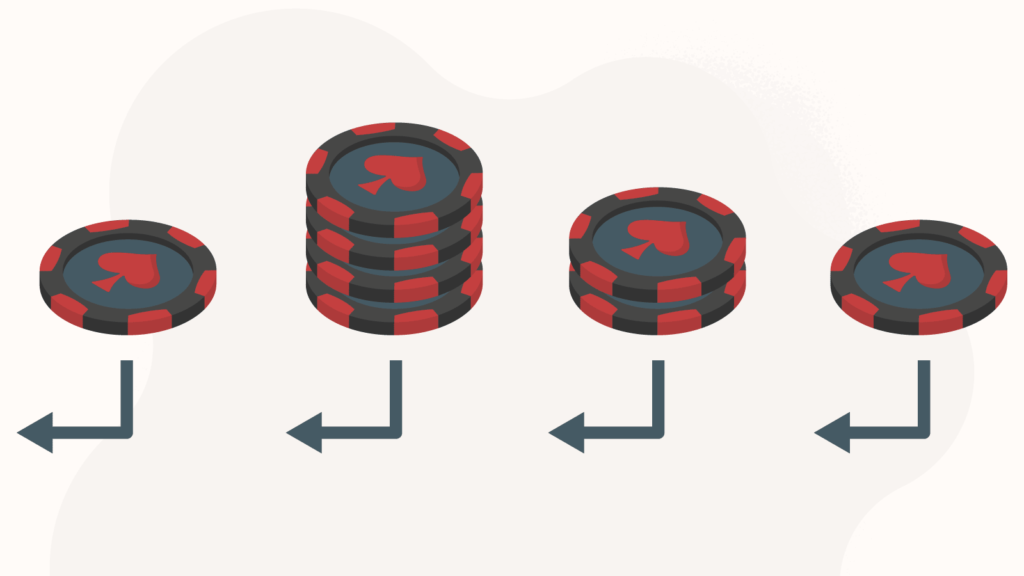In this article about the Martingale Strategy, we will explore one of the most popular betting systems used by gamblers around the world. Whether you are a seasoned casino player or just curious about the world of gambling, understanding the Martingale Strategy is essential. This roulette strategy has been both praised and criticized for its simplicity and effectiveness, but like any betting system, it comes with its own risks and limitations. Let’s dive into the world of the Martingale Strategy and explore its intricacies.

What is the Martingale Strategy?
The Martingale Strategy is a betting system that originated in 18th-century France. It was named after a popular casino owner, John Henry Martindale, who was known for his relentless pursuit of gambling success. The strategy is straightforward: you double your bet after every loss, with the aim of recouping all previous losses and making a profit in the long run.
The underlying principle of the Martingale Strategy is the belief in the law of averages. Advocates of the strategy argue that over time, a series of losses will be balanced out by an equal number of wins. By increasing the bet size after each loss, players can eventually recover their losses and end up with a profit.
How Does the Martingale Strategy Work?
To implement this strategy, follow these steps:
- Set a Base Bet: Start by deciding on your base bet, which is the amount you are willing to risk on each wager.
- Place Your Initial Bet: Begin with your base bet. If you win, collect your winnings and start again with the base bet. If you lose, proceed to the next step.
- Double Your Bet: After a loss, double your bet amount. This is done to recover the previous loss and make a profit equal to the base bet. If you win, return to the base bet. If you lose again, continue to the next step.
- Continue Doubling Your Bet: Repeat the process of doubling your bet after each loss until you win. Once you win, return to the base bet.
The Martingale Strategy operates on the assumption that eventually, you will have a winning streak that covers all previous losses. However, it is important to note that this strategy requires a substantial bankroll to sustain a losing streak and reach the desired outcome.
Pros and Cons of the Martingale Strategy
Pros of the Martingale Strategy
- Simplicity: The Martingale Strategy is straightforward and easy to understand, making it accessible to beginners and experienced gamblers alike.
- Quick Recovery: In theory, the Martingale Strategy allows for rapid recovery of losses. A single win can compensate for multiple losses, potentially resulting in a profit.
- Risk Management: By doubling bets after a loss, the Martingale Strategy aims to limit long-term losses and provide a clear path to recouping previous losses.
Cons of the Martingale Strategy
- Exponential Betting Increase: The strategy requires an exponentially increasing bet size after each loss. This can quickly escalate and surpass table limits, rendering the strategy ineffective.
- Limited Profit Potential: While the Martingale Strategy aims for steady wins, the profits generated can be relatively small in comparison to the risks involved.
- Bankroll Requirements: Sustaining a losing streak with the Martingale Strategy requires a substantial bankroll. Without sufficient funds, players may be unable to continue doubling their bets and recover losses.
- Gambling Restrictions: Many casinos have implemented betting limits to counteract the effectiveness of the Martingale Strategy, further reducing its potential for success.
Martingale Strategy Variations
Mini Martingale
The Mini Martingale variation is a modified version of the original strategy, aimed at reducing the risk of large losses. In this variation, players set a maximum number of consecutive losses that they are willing to tolerate before returning to the base bet. By limiting the number of doubling bets, players can avoid the steep increase in bet size and mitigate potential losses.
Grand Martingale
The Grand Martingale is an amplified version of the traditional Martingale Strategy. In this variation, players not only double their bet after a loss but also add an additional fixed amount. The purpose of the additional amount is to accelerate the recovery of losses and potentially generate larger profits. However, the Grand Martingale also amplifies the risks associated with the strategy, as the bet size increases more rapidly.
Reverse Martingale

The Reverse Martingale, also referred to as the Paroli System, presents an alternative perspective to the conventional Martingale Strategy. Rather than doubling bets following a loss, this approach involves doubling bets after a win. The underlying objective is to capitalize on winning streaks and allow profits to accumulate, while concurrently mitigating potential losses during periods of unfavorable outcomes. This strategy is often regarded as a more daring strategy, offering the potential for larger profits but also entailing heightened risks.
Anti-Martingale
The Anti-Martingale presents a distinct variation of the Martingale system, differing from the Reverse Martingale approach. In this strategy, players increase their bet sizes after a win, in contrast to the traditional Martingale method. However, unlike the Reverse Martingale, the Anti-Martingale system involves reducing bet sizes following a loss. The fundamental objective of this strategy is to capitalize on winning streaks by amplifying profits and, conversely, to mitigate losses during periods of consecutive losses. By employing the Anti-Martingale system, gamblers aim to strike a balance between maximizing gains and minimizing potential setbacks in their gameplay.
The Martingale Strategy in Online Casino Games
The Martingale strategy, although originally developed for games of chance in physical casinos, has also gained popularity in the realm of online casino games. The concept and principles of this strategy remain the same, but its application and potential outcomes may differ in an online casino environment.
In online casino games, the Martingale strategy is often employed in games with even-money bets, such as roulette, blackjack, or baccarat. The strategy suggests that if a player experiences a losing outcome, they should double their bet on the next round in an attempt to recoup their losses and achieve a profit when a winning outcome eventually occurs.
The allure of applying the Martingale strategy in online casino games lies in its simplicity and the belief that, statistically, a winning outcome is bound to happen. Proponents argue that by doubling the bet after each loss, players can ultimately recover all previous losses and secure a profit equal to the initial wager. However, it is crucial to understand the limitations and risks associated with this strategy.
One of the primary challenges of using the Martingale strategy in online casino games is the presence of table limits and betting restrictions. Most online casinos impose minimum and maximum bet limits to protect themselves from excessive losses and to ensure fair gameplay. These limits can quickly disrupt the progression of the Martingale strategy, as reaching the maximum bet limit or not having sufficient funds to double the bet can render the strategy ineffective.
Furthermore, the assumption that a winning outcome is inevitable after a losing streak is flawed. Each round in an online casino game is an independent event, and the outcome of one round does not impact the outcome of subsequent rounds. Therefore, there is no guarantee that a winning outcome will occur within a specific timeframe, and a prolonged losing streak can lead to significant financial losses if the bets keep doubling.
Is the Martingale Strategy Effective?
The effectiveness of this Strategy has long been a topic of debate among gamblers and experts. While the strategy has its merits, it is essential to understand its limitations and potential risks.
The Martingale Strategy can work in theory, but it relies on several assumptions that may not always hold true in practice. It assumes an unlimited bankroll, no table limits, and an infinite series of bets. Unfortunately, these conditions rarely exist in real-world gambling scenarios.
Additionally, the strategy does not account for the presence of the house edge, which is the built-in advantage that casinos have over players. Even with a winning streak, the house edge ensures that, in the long run, the casino will have an overall advantage.
FAQs
Conclusion
The Martingale Strategy is a popular betting system that has captured the attention of gamblers worldwide. While its simplicity and potential for quick recovery make it appealing, it is crucial to understand the risks and limitations associated with this strategy. This Strategy can be effective in the short term, but it requires a substantial bankroll and is subject to betting restrictions imposed by casinos. As with any betting system, responsible gambling and risk management should always be a priority.
